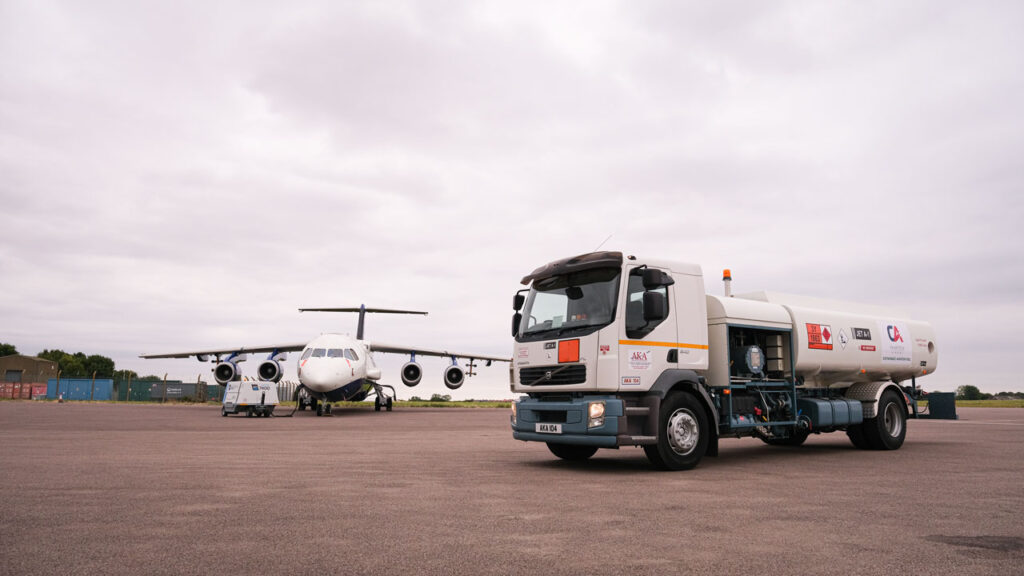
FAAM Airborne Laboratory to use sustainable fuel for home-based flying
New fuel storage and aircraft fuelling infrastructure has been installed at Cranfield Airport, making available a reliable store of sustainable aviation fuel to the FAAM Airborne Laboratory’s research aircraft at its home base.
To minimise carbon dioxide emissions and impacts on local air quality from flying its research aircraft, the FAAM Airborne Laboratory has partnered with Cranfield Airport to secure a supply of sustainable aviation fuel on site. The installation was supported by UK Research and Innovation, who own the FAAM Airborne Laboratory research aircraft, as part of their drive to reduce the facility’s carbon emissions.
The FAAM Airborne Laboratory’s research aircraft is hangared at Cranfield Airport in Bedfordshire, where the newly installed facilities will ensure sustainable aviation fuel is stored ready for aircraft operating at the airport – made possible through an investment by the Natural Environment Research Council, National Centre for Atmospheric Science, and Cranfield Airport.
“A local supply of sustainable aviation fuel is an important step toward UKRI’s net zero commitment,” comments Alan Woolley, Head of the FAAM Airborne Laboratory. He adds: “Much of our research focuses on air pollution and climate change, and as we move toward a low-carbon future the ways in which we study these topics need to change. Using SAF is one approach to minimising the FAAM aircraft’s environmental impact while maintaining its research capabilities.”
Flying with a blend of sustainable aviation fuel is the quickest way to reduce carbon emissions from the research aircraft operations. The FAAM Airborne Laboratory’s research aircraft has been approved to use blends of up to 50% sustainable aviation fuel content, which has the potential to reduce net carbon dioxide emissions by 35% per flight. The facility now also uses an electric tug and ground power unit, powered using responsibly-sourced electricity (in part from local solar voltaic arrays).
The new installation will make it possible for the FAAM Airborne Laboratory to operate on sustainable aviation fuel for all domestic flights that depart from its home base of Cranfield Airport.
The new storage facility at Cranfield is able to contain 30,000 litres of sustainable aviation fuel, and the vehicle that transfers the fuel to the aircraft is able to hold 14,000 litres. An overall capacity of 44,000 litres of sustainable aviation fuel is enough for around 4 flights in our atmospheric research aircraft – taking into account the type of science mission, not refuelling above what is required, and emergency detour plans.
As sustainable aviation fuel options become available at more airports worldwide, the FAAM Airborne Laboratory is set to use it whenever practicably possible for overseas scientific monitoring projects.
Improving the atmospheric science facility’s sustainability is a key aim of its Mid-Life Upgrade programme, and a major part of the Natural Environment Research Council’s actions towards net zero.
The FAAM Airborne Laboratory’s research aircraft is owned by UK Research and Innovation and the Natural Environmental Research Council. It is managed through the National Centre for Atmospheric Science, and leased through the University of Leeds. The aircraft is supported, modified and upgraded by BAE Systems, operated by Airtask Group, and maintained by Avalon Aero. It is hangared in Bedfordshire, with Cranfield Airport at Cranfield University.
